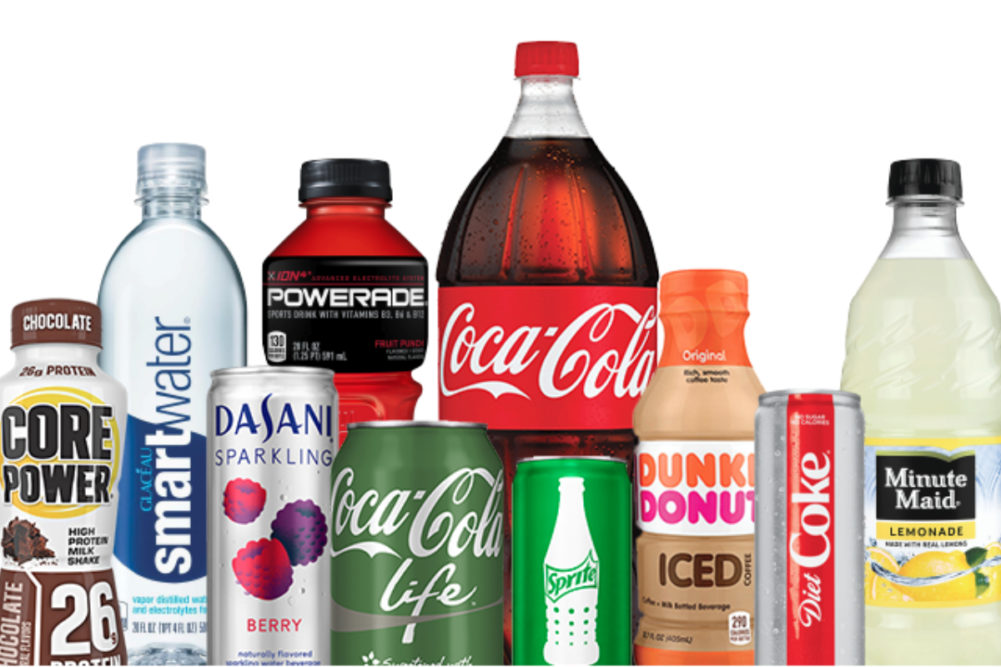ATLANTA — Having dramatically slimmed down its global portfolio of brands, The Coca-Cola Co. is poised to grow its business “through focused execution and targeted innovation,” said James Robert B. Quincey, chairman and chief executive officer. Mr. Quincey spoke Feb. 19 at the Consumer Analyst Group of New York virtual conference.
In addressing disruptions to its business associated with COVID-19, Mr. Quincey said principal objectives for Coca-Cola were to navigate the pandemic and resume a growth trajectory, gaining market share and “winning more consumers” as well as sustaining the strength of the company’s “system economics.”
Specific priorities he cited included the streamlining of the company’s portfolio to under 200 brands from about 400. The reduction was necessary for the company to “really drive for quality leadership,” he added.
Mr. Quincey said the effort will bear fruit.
“We believe we now have a strong portfolio of brands that will enable us to address all drinking moments across dayparts, and we will continue to grow these brands through focused execution and targeted innovation where relevant,” he said.
The greatest growth opportunities looking ahead are in emerging markets, Mr. Quincey said. In developed markets, 75% of beverages consumed are commercial products, he said. While these markets offer plenty of opportunity for market share gain, in the emerging markets, only a quarter of what is drunk is a commercial beverage he said.
“There's an even bigger opportunity to develop the industry in what is ultimately the place where 80% of the world's population still is,” he said. “And we, the Coca-Cola system, we have the platform to take advantage of that.”
As it looks to opportunities for growth, Coca-Cola is “laser-focused” on its core beverage business — sparkling or hydration or teas, Mr. Quincey said.
“And we have begun experimenting in adjacencies, whether that be Costa brand coffee or the Lemon-Do product in Japan and the launch of Topo Chico Hard Seltzer in multiple markets around the world,” he said.
Beyond the products, the population Coca-Cola is eyeing for growth opportunities is Gen-Z, which he said is looking for ways to “refresh themselves so they can reset their unclear world with greater clarity and transparency.”
With this demographic in mind, Coca-Cola for the first time produced a global campaign for a single product, giving it a more efficient and effective marketing approach, Mr. Quincey said.
“And we produced all this with a one network, one global campaign approach,” he said. “So this is actually our first-ever global Sprite campaign. And it's going to be launched in approximately 50 markets this year... We're really focusing our investments behind fewer, bigger and more efficient integrated campaigns.”
Turning to product innovation, Mr. Quincey said Coca-Cola needs to continue introducing new and relevant ideas for products and equipment. He described the company’s new product process as conducted through a lens of “more rigorous objectives.”
“Our pipeline for 2021 has been developed through clear routines and processes to assess the purpose and right level of innovation,” he said. “Innovation must be more than just flavor extensions, and it is being primarily driven by our commitment to be consumer-centric. They can also be tech-driven or enhance a package or enhance a formula, but in the end, it must be consumer-centric.”
Counterbalancing the process driven innovation efforts is what Mr. Quincey called a limited amount of “intelligent experimentation.” Eleven such experiments are on tap for 2021.
Reviewing the company’s finances, John Murphy, executive vice president and chief financial officer, reaffirmed the company’s long-term growth targets — organic revenue at 4% to 6%; operating income, 6% to 8%; earnings per share, 7% to 9%; and free cash flow in the 90% to 95% range.
Mr. Murphy said general perceptions about the health of the carbonated soft drink business may be too negative or pessimistic.
“The sparkling business, while large and often perceived as being tapped out, remains very healthy, indeed,” he said. “Thanks to its enduring appeal to our consumer base across the world and supported by the great work being done to invigorate and keep relevant brands like Coca-Cola and Sprite that we talked about earlier.”





